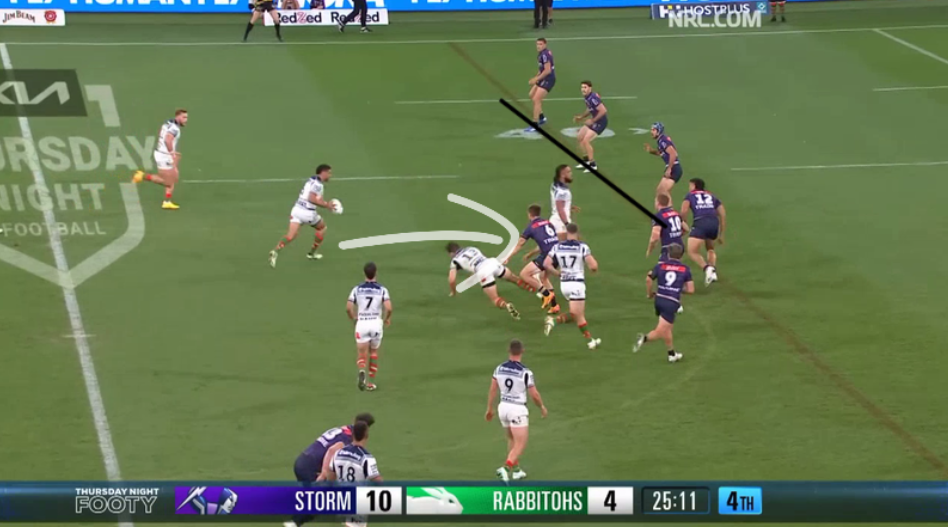I always have a particular match, trend, team, or player in mind to focus on heading into each round of the NRL season. This week, I’m looking edge defence.
We’ve spent a bit of time here looking at how wingers defend in the NRL recently. If anything, we’ve been doing the defending of wingers.
Wingers jamming is a popular cry in the stands every week. It’s often warranted, but sometimes they’re left with little choice. At the very least, they’re left with a choice. Sometimes they make the wrong one…
It often depends on the system of the defence. Some teams jam more than others. As two of the best defensive teams in the NRL, it’s worth looking into how the Penrith Panthers and Melbourne Storm defend differently on the edges to make a comparison.
Oscar highlighted a few examples of wingers jamming and it not necessarily being a howler of a decision to do so during the week. It prompted some good discussion in the comments on alternate ways for teams to defend these situations.
When the middle is engaged and the attack is able to get outside of the three or four-in defender, teams can either track back to buy time or hold their line and cramp the attack. Both have their pros and cons. Ultimately, the elite teams in either approach make the best defensive teams in the competition.
Storm sliding back
The Storm typically take a more passive approach. With enough room behind them, their edge will track back to a roughly 45-degree angle to buy time for the inside defence to track across. They use the sideline as an extra defender and are prepared to give up metres to avoid the linebreaks.
You can see here that Cody Walker is able to straighten up to create a four-v-three situation on the edge. In response, the three edge defenders slip backwards and Jye Gray runs his edge out of room.

It’s proven successful in defending Tom Trbojevic in big games. For sweeping teams reliant on their fullback or those that attack from further out, it takes away one of the opposition’s better strengths.
Panthers holding firm
The Panthers take a different approach. They get high off the line and stay there for as long as possible.
This is a similar picture for the defence to what the Storm saw in front of them. The North Queensland Cowboys attack the space around the three and four-in defenders. Unlike the Storm, the Panthers edge stays high and takes the space away from the attack. They force the Cowboys to make the difficult pass if they’re to go around them.

By staying high and forcing the more difficult pass, the Panthers have become known for taking interceptions out wide. Stephen Crichton’s heroics in the past aren’t an accident. They’re part of the system, and he’s particularly good at plucking the ball out of the air.
In only his second game for the club, Paul Alamoti did the same to take Scott Drinkwater’s pass to the house to score on the stroke of halftime.

He stayed high and in position to turn in on the centre or bounce out to the winger, depending on the pass.
Edge defence is difficult. Each team has their system, and that system becomes stressed if the middle can’t do their job around the ruck.
How they respond to that stress is what separates the best edge defences in the NRL from the worst.
With all of that in mind, we will keep a closer eye on how teams defend in these spots and whether or not a jamming winger or centre has fallen out of the system or responded to a cue in front of them.
